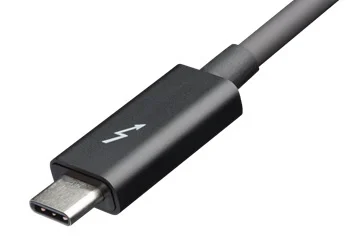
One Port To Reign Supreme
Along with the new wave of tech, technology companies have adopted USB-C to carry their new devices into the future. This means adios to our old rectangular friend USB Type-A. USB Type-A was the be-all and end-all when it came to connecting accessories for many gaming devices, computers, and mobile phones. To help ease the transition while the rest of the world catches up, companies include USB-C to USB Type-A adapters with newly acquired laptops and devices. This new standard is allowing us to see better performance and more unlocked features à la Thunderbolt 3.
Thunderbolt 3
Thunderbolt 3, which debuted in 2015, is the latest version in the Thunderbolt family and chose the highly popular USB-C port to harness its new-age features for the tech of tomorrow. This game-changing decision is an upgrade from its predecessor, Thunderbolt 2, which worked off of mini DisplayPorts.
So what kind of features can this lightning bolt cable deliver?
Well, here they are:
- Data transfer speeds of up to 40 Gbps
- Backward compatibility with previous Thunderbolt connections (with adapters)
- Faster 4K Display (120 Hz) & Audio transfer capabilities
- Up to 100 watt charging capabilities
- The ability to daisy-chain up to six devices
- The ability to be used as a standard USB-C cable replacement
So is USB-C the same as Thunderbolt 3?
Although you can use a Thunderbolt 3 cable in place of a USB-C cable, it doesn’t necessarily work the other way around. USB-C has slower data transfer speeds and capabilities due to it not being built on a PCIe platform like Thunderbolt 3, meaning that it has fewer roadways to transfer data. Having fewer roadways also means that a Thunderbolt 3 device won’t have its intended capabilities when being plugged into a standard USB-C port or USB-C cable. In other words, if it is Thunderbolt 3, use its intended cables and ports.






